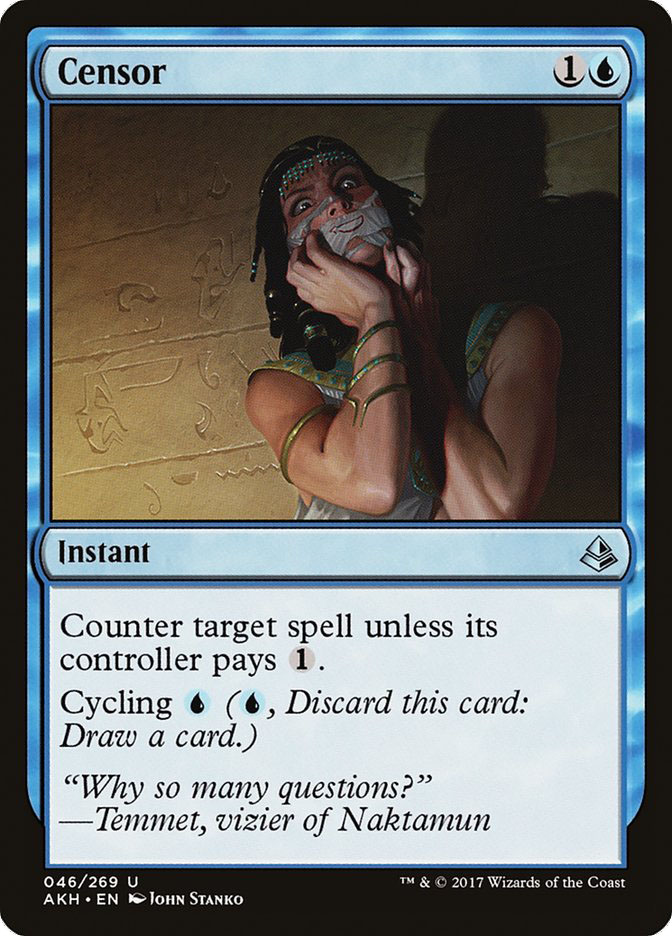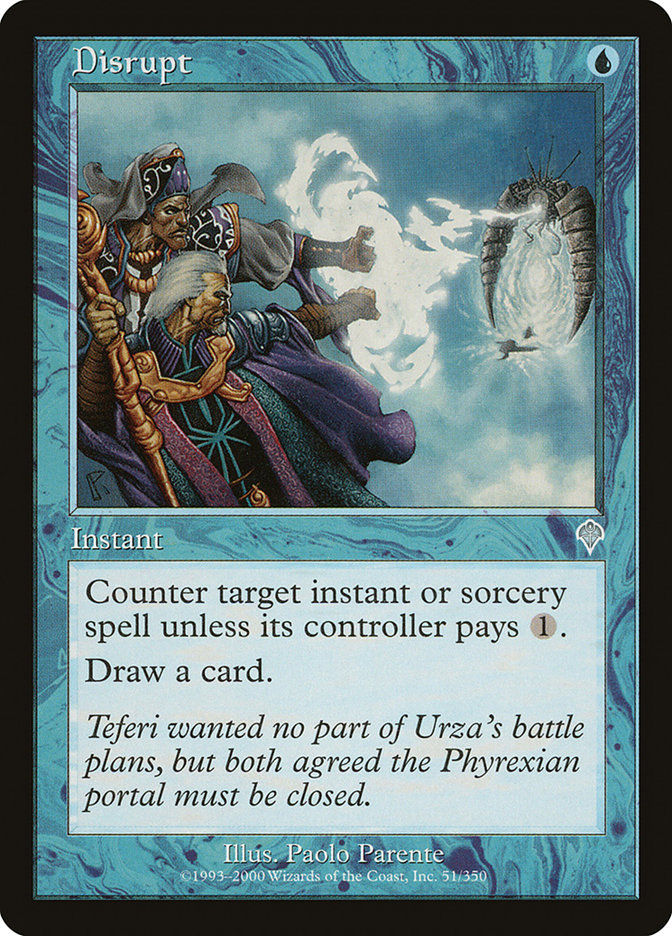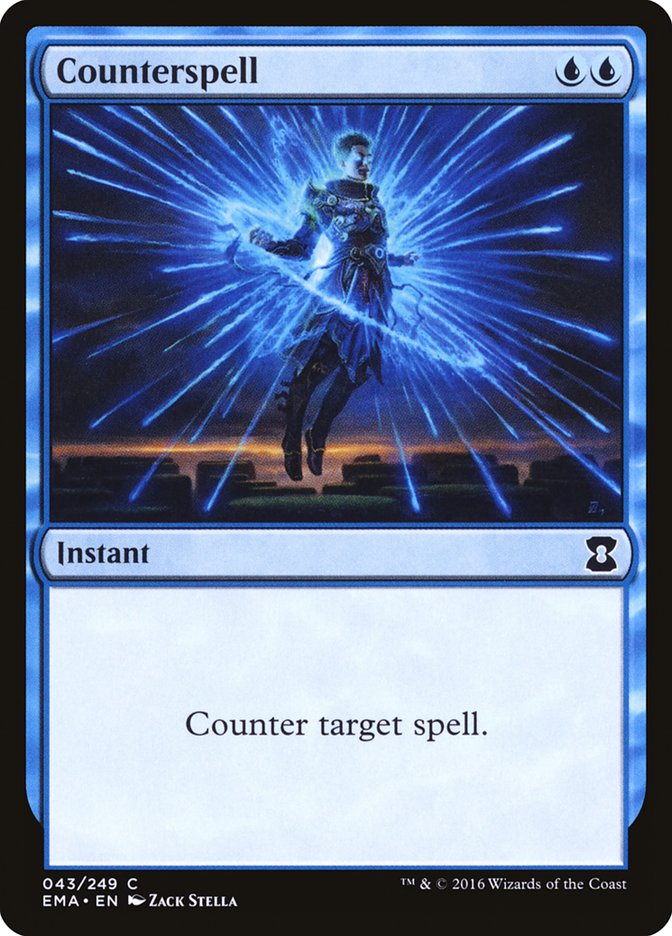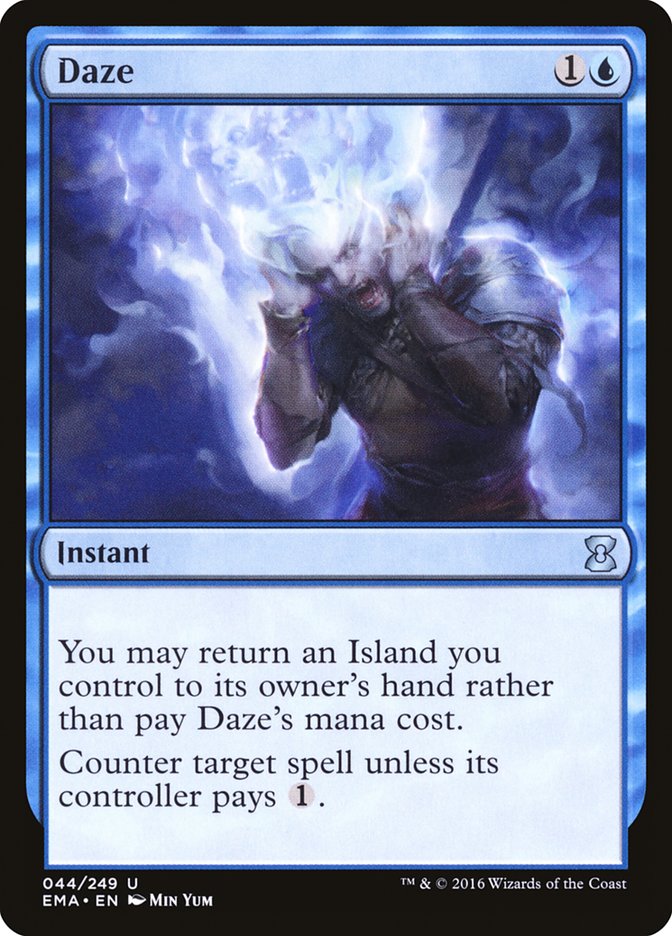I read everything. Or, well, I try to read everything that gets written about Magic. Even when I disagree with someone (and, oh, some of my friends know my howls of “Can you believe they wrote this?“), I want to know what ideas are out there, what general truths are the perception of the now. In essence, I want to be in touch with the zeitgeist of the moment of Magic.
We’ve gotten to a moment in Magic that has people frustrated; there is some malaise in the Magic community right now, where Marvel’s presence has made the world feel a little less marvelous than they’d like. There are four reasons for that, too: Ulamog, Ulamog, Ulamog, Ulamog. Some Marvel games are functionally over on turn 4, and for those who draw out, Ulamog, the Ceaseless Hunger will tend to end it. In those games in the middle, it’s absolutely common to just fall to the midrange elements of the Temur Aetherworks deck.
I mean, just think about the domination of the deck last weekend, with five copies in two Top 4s from the two Grand Prix the previous weekend, including a solid close-out in the finals: Aetherworks Marvel spinning against Aetherworks Marvel in both Santiago and Montreal.
Creatures (18)
- 4 Ulamog, the Ceaseless Hunger
- 2 Tireless Tracker
- 4 Whirler Virtuoso
- 4 Servant of the Conduit
- 4 Rogue Refiner
Planeswalkers (2)
Lands (22)
Spells (18)

Creatures (17)
- 4 Ulamog, the Ceaseless Hunger
- 2 Tireless Tracker
- 3 Whirler Virtuoso
- 4 Servant of the Conduit
- 4 Rogue Refiner
Planeswalkers (3)
Lands (22)
Spells (18)
- 4 Aetherworks Marvel
- 3 Woodweaver's Puzzleknot
- 4 Harnessed Lightning
- 4 Attune with Aether
- 3 Glimmer of Genius
Sideboard

Creatures (11)
Planeswalkers (2)
Lands (22)
Spells (25)

Creatures (9)
Planeswalkers (2)
Lands (23)
Spells (26)

While the decks in Santiago favored a more green-heavy build with Servant of the Conduit and Tireless Tracker in the main, the builds in Montreal favored blue with Censor and Glimmer of Genius. There are a lot of small details in the differences between these decks, but they all share something important in common: they can make a game out of nearly every stage of the game.
I was talking with Zac Elsik about a build of U/R/X Control I had that was beating Aetherworks regularly enough, and he expressed some surprise. Beating the fast game was certainly doable, and the long-game could be a challenge because of Ulamog, the Ceaseless Hunger, but what about the mid-game?
To this, I feel like it is important to look at the list played by Kevin Jones at GP Montreal.
One of the things that I think is so powerful about the blue-based builds of Temur Aetherworks is that they are able to blunt the mid-game value of an opposing Temur Aetherworks deck as well as incentivize the opponent to slow-play their game lest a Censor make things rough. This feature of Censor is something that made me initially wonder how many copies of Censor one ought to play in control decks, and after playing it out, made me strongly disagree with my friend Shaheen Soorani’s take on the card, which he called “much weaker than [he] initially thought”. I’m definitely at the other end of the spectrum, where I’ve decided that Censor is the reason to be playing control.
Censor is great at stopping three-drops from an opponent. Running four, in additional to relevant removal, means that you’re going to be far more likely to not only stop the value-game that Zac was concerned about from any flavor of Aetherworks deck, but you’re also going to make an opponent more likely to not cast their Aetherworks Marvel on four mana, which can then give you that time to cast card draw. Then, in the late-game, a frightening Ulamog, the Ceaseless Hunger can be stopped for five mana, with a Censor joining forces with a Disallow to stop the pain.
Take this build:
Creatures (4)
Lands (25)
Spells (31)

Chris Andersen is doing what I’m talking about! This is all straightforward, no fooling around, four Censor, even though he also already has five other two-cast counterspells. While Chris didn’t face Temur Aetherworks in the finals (it was a U/R Control mirror match), he did explicitly say he liked the deck’s Aetherworks matchup. From my experience, I agree.
In Standard, I think the card is so good because it allows the control deck a little bit of extra time to get to the part of the game where it is able to make use of its card draw to pull ahead, not just “whether or not Censor is cast” but also because Censor is cast. You cannot merely have people have the fear of the card; they have to have the fear of the card and the effect of the card to slow them down in those games where the opponent doesn’t slow their game, either for lack of better options or purposefully. You want the Censor to have so many counter options that you can save your better counters for later in the game, where you’ll be able to use them to lock out those games.
But, can it go beyond that?
I’m starting to think it can…
On to Modern
Creatures (16)
Lands (19)
Spells (25)

Creatures (3)
Planeswalkers (4)
Lands (24)
Spells (29)
- 4 Serum Visions
- 1 Crucible of Worlds
- 1 Condemn
- 2 Spell Snare
- 3 Cryptic Command
- 1 Negate
- 4 Path to Exile
- 4 Spreading Seas
- 3 Supreme Verdict
- 1 Detention Sphere
- 1 Sphinx's Revelation
- 1 Blessed Alliance
- 1 Cast Out
- 2 Censor
Sideboard

Censor in Modern. Huh!?
One of the clear differences between Modern and Standard is pretty simple: in Standard, you might start topping out your curve at six with your expensive cards that you might plan on casting. Four mana in Standard is a solid investment, but it isn’t the end-all.
Things are tighter in Modern. Curves can entirely stop at two or three. Four mana is a hell of a lot of mana in Modern. Five or more happens sometimes, but it’s pretty rare or achieved with special effort.
So, actually, come to think of it, given the tight constraints of Modern, Censor actually makes a great deal of sense. You can expect that your opponent is likely to tap out a hell of a lot more, and if they are outside of the realm of tapping out, a spare blue mana can be an ask, but it isn’t a huge ask.
One of the crazy things to think about here is that TwistedWombat had the card in a blue-based Death’s Shadow deck. With all of the most efficient cards available, somehow, there was still room to try out Censor. Censor was good enough that it was being played alongside Lightning Bolt and Fatal Push.
The more I think about it, the more I think that the card could end up being a staple in the format. But can it be pushed more?
Pushing Censor More!
Last time, I talked about the new world of Legacy, post-Top bannings. There were a lot of decks that I talked about, but one thing that I had milling around in the back of my mind was a specific deck that took a hit with the banning of Sensei’s Divining Top.
Lands (18)
Spells (42)
- 4 Brainstorm
- 4 Force of Will
- 1 Meditate
- 3 Cunning Wish
- 4 Merchant Scroll
- 1 Turnabout
- 4 High Tide
- 4 Candelabra of Tawnos
- 1 Snap
- 4 Time Spiral
- 1 Wipe Away
- 4 Ponder
- 4 Preordain
- 3 Flusterstorm
Sideboard

This was the pre-Top build, but I know for a fact that Feline Longmore essentially fell in love with Sensei’s Divining Top in the deck. As I thought about the space this made in the current build, I didn’t fully have it in me to suggest Censor as a possible card in the deck, but it was definitely a thought that kept coming to mind. And I think there were good reasons for it to come to mind, but I just hadn’t yet gotten to the point in thinking about the card that I was ready to think about it as a Modern card, let alone a Legacy card.
Let’s take a trip back in time to explain why.
Lands (20)
Spells (40)
- 2 Stroke of Genius
- 4 Brainstorm
- 3 Counterspell
- 4 Force of Will
- 4 Impulse
- 1 Intuition
- 3 Merchant Scroll
- 4 Frantic Search
- 4 Turnabout
- 4 High Tide
- 3 Disrupt
- 4 Time Spiral
Sideboard

So, one of the things that I loved about this older version of High Tide is that the deck essentially played out as a control deck until it would combo off. The newer decks are really only running the countermagic to keep themselves from being killed, and this hybrid control strategy is fundamentally more aggressive than a pure control strategy. In today’s moment, there might not be time to run Censor, but it appealed still.
First of all, in my old Extended deck, Disrupt was just a monster of a card; you could stop the opponent’s great plays, and then once you started going off, you could more easily do so by turning two mana into drawing a card. With Censor, you’re turning one mana into drawing a card once you’ve started going off. Importantly, though, your opponent can often be very mana-constrained, so a single mana might as well make for a hard counter.
If Censor reminds me of the successful power of Disrupt all those many years ago, it is worth thinking about things that are comparable to the card that are working in Legacy.
As we all know, Daze hasn’t been being played because it costs two mana, but it is a testament to the fact that a single mana matters a lot. For that matter, why is Thalia, Guardian of Thraben such a potent weapon in Legacy? Despite how cheap everything is, everything is also bone tight on mana.
Creatures (15)
Planeswalkers (3)
Lands (22)
Spells (20)

Creatures (4)
Planeswalkers (2)
Lands (24)
Spells (30)

With these two decks, we can see that the card Counterspell is seeing some minor play in Legacy as well, showing us that spending more than one mana is still possible for countermagic, even in a format so fast. While spending a single blue mana to draw a card is certainly underpowered, I do find myself thinking that there is room for the card even in a format as crazy as Legacy is.
Censor Final Notes
In Standard, I think Censor is so good that I basically start with four copies of the card in any counterspell-based control deck that I’m currently playing. I expect that this will continue to be the case even if something happens to Aetherworks Marvel (like a banning of Ulamog, the Ceaseless Hunger, perhaps). The card absolutely creates an environment that plays right into what Standard blue decks want to be doing.
In Modern, I’ve tried out the card and have learned that the card does indeed seem to have a potential place. It’s definitely good enough. I’m still working out what this might mean for deck selection in the format, but I’ve started reworking any number of old control decks of yore, and am excited for the prospects of the card.
What’s shocking to me, though, is the prospect of it maybe being good enough for Legacy. If it is, I expect it will be in some very narrow places, and likely only barely being played, but I find it easy to imagine running three or four in High Tide, and easy to imagine one or two in these Jace, the Mind Sculptor-style decks, whether they be something like U/B Landstill or Team America or some other wild control deck that might be newly viable, perhaps in place of a card like Counterspell.
By the time you read this, SCG Baltimore will be in the books. Please let Censor have made some noise!







